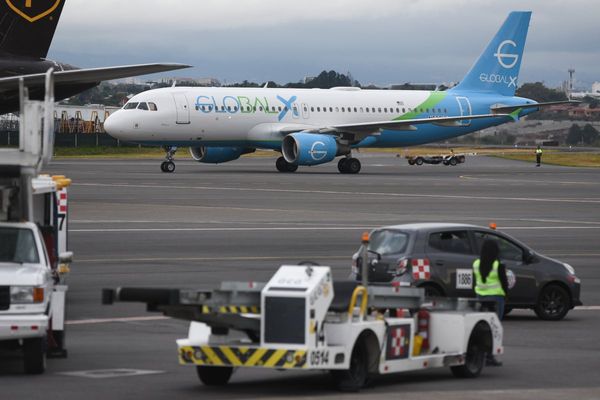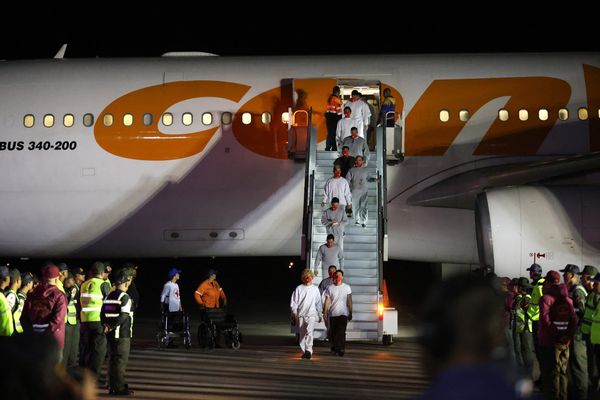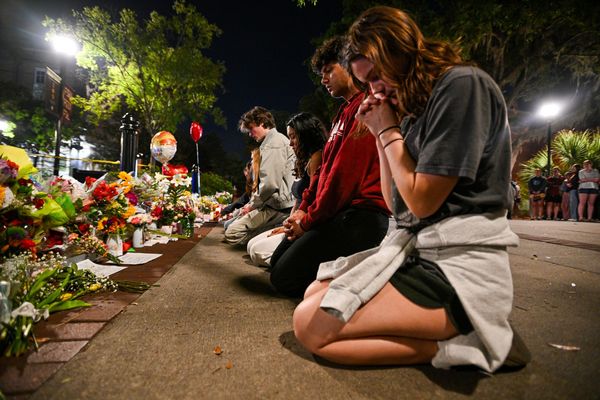
As the predicted arrival state of charge ticked down to 11%, I gave Meg a nervous look. It was time to turn around. We had hoped to make it Rainbow Viewpoint, the highest overlook in Bryce Canyon National Park. But 80 miles of below-freezing country roads stood between us and our hotel, and I wasn’t sure if our Blazer EV, Gorbo, was going to make it.
We turned around.
We pulled into the hotel a couple hours later with 18% left in the battery. We could have made it, but the Blazer’s overly cautious range readout gave us pause. Midway through my 1,200-mile EV roadtrip, I was both glad that it was conservative, and annoyed that it caused me to bail on a beautiful vista. I trusted it, but it still pissed me off.
That about sums up my first six months of Blazer EV ownership.

What’s Great
I love driving the Blazer EV every day. Mine is a 2024 LT AWD, which came with extra launch edition goodies and is equivalent to today’s 2LT. It’s a quiet, refined car with excellent software.
It’s also big. On our 1,200-mile road trip from San Diego to Utah, we packed the thing full up with camping gear, coolers, tables, chairs, extra clothes and everything else. We even slept in it, with the area behind the seats big enough for two grown adults—though both of us are under 5’ 7”.
Gallery: 2024 Chevy Blazer EV Long-Term Owner Review







The built-in software also rocks. Having Google Maps onboard means I never miss having Apple CarPlay. I also like that I don’t have to worry about losing the connection to CarPlay, or always having my phone. It means I can leave my house without my phone for errands, and still listen to Spotify or navigate effectively.
I also love that it has actual ground clearance. With 7.9 inches separating its lowest part from the pavement, it’s higher up than any other mainstream electric SUV. A Kia EV9 gets close, but a Hyundai Ioniq 5 or Kia EV6 has a much more car-like 6.1 inches of clearance. Even Jeep’s first electric SUV is worse, with a disappointing 6.4 inches of clearance. Between this, the large cargo area and the cavernous back seat, the Blazer EV is by far the best electric option if you—like me—want to be able to take four adults camping or hiking off a dirt road.

If you want something better, you’ll need a Rivian, a G-Wagen or an electric pickup. All of those options are far more expensive.

What’s Just Fine
The EPA range figure for my Blazer EV LT AWD is 279 miles. That’s acceptable for the class, but still a bit of a pain on road trips.
Realistically, you’re never going to run it down to 0, nor charge it to 100% most of the time. And because the Blazer’s route prediction software tends to lean conservative on making sure you arrive with more than 10%, I arrived to most of my charging stops with closer to 20% battery. Since charging speed is already slow and drops dramatically above 80%, I was basically only using 60% of the battery. That meant only covering around 160-180 miles between stops. And I was still stopping for 35 minutes on most occasions.
So range wise, I consider it acceptable. It’s similar to what you’d get from an AWD Kia EV6 or Hyundai Ioniq 5, and there’s a higher-range, rear-wheel-drive version available. Yet my trip was a good reminder that you really want closer to 350 miles of EPA range if you do frequent road trips. I’ll note that most people do far fewer road trips than they claim to, and that the more frequent stops meant I arrived in Utah far fresher than times I’ve white-knuckled an eight-hour trip.

Driving dynamics are also worth filing under “just ok.” The Blazer is a big, heavy crossover, and there’s no real excitement to behind the wheel. Its 288-horsepower powertrain packs 333 lb-ft of torque, all of which is available from a dead start. So it’s plenty punchy for daily driving. Dip into the throttle, though, and you’ll be reminded that this is a 5,300-lb porker that'll run out of steam pretty quickly. It handles itself admirably in corners given the weight, and I’d put it above a Toyota Rav4 or Ford Escape, but don’t come here looking for fun. It’s merely acceptable.
So too are the sound system and seats. The Blazer is plenty quiet and soft-riding on the highway, but its middling speakers and seats have me eyeing Cadillac Lyriq owners with envy. A speaker upgrade may be in the future. The seats were absolutely fine for 1,200 miles of driving, I just prefer a plusher setup.
What Stinks
The MyChevrolet smartphone app, for starters. It frequently takes close to a minute to tell me what my state of charge is, and remote start commands seem to fail half the time. A helpful person on the forums pointed out that sending a lock command first can help wake the vehicle up, and that’s helped improve my success rate. A clever Redditor noted that the MyBuick app works for Chevies, too, and seems to be more consistent. I assume that’s because Buick owners use the app less often, and there are fewer of them. Even with these workarounds, though, the app experience is slow, clunky and a decade behind Tesla.
Don’t even think about using it to initiate Tesla Superchargers. Despite GM supporting them via the app, the native Tesla app is orders of magnitude more consistent. It’s also nicer to use. Of course, you wouldn’t have to use either if GM EVs supported automatic payment and charge initiation at Tesla Supercharger. You know, like Rivian and Ford do. But GM doesn’t.
I must also note that while I loved having access to Superchargers, there’s a steep price for the convenience: Looking and feeling like an asshole.

I had to park across two stalls in most instances, and on the gravel in another. Getting close enough to the Supercharger station for the puny cord to reach also required me to get in and out of the car, nudging ever closer. It is an indefensible user experience, though not GM’s fault in the slightest. It’s just a sad truth that the nation’s only great charging network was built around one set of cars, and infuriatingly inflexible.
On the way back, I stopped at a V4 Supercharger station with 100 stalls, and cords that could reach either side of the car. It felt like a beautiful future, rather than the patchwork, frustrating present. Charging times are also on the longer side. A 350-kW charger can get me from 10-80% in 40 minutes on a great day.

That's extra annoying when it's cold. Our Bryce Canyon experience shows why the winter range leaves something to be desired. We had a 160-mile round trip from Springdale, Utah to Bryce Canyon, with maybe 20-30 miles in the park. With a 279-mile EPA range and a starting charge of 100%, you'd think we'd be set. But it got down to around 8 degrees the second morning, and the 4,000-foot elevation gain on our way to Bryce rocked our efficiency. So for rural road trips in the cold, you need more range.
Finally, I’m unimpressed with GM’s quality control. I still hear a faint rattle from the headliner, despite having it replaced. My panoramic moonroof often requires two or three or 11 attempts to get it to close, as its pinch sensor seems to panic right before it seals. I’ll need another dealer visit to address these things.
That’s three dealer service appointments so far, if anyone is keeping score. (I am.)

My Take So Far
I’m still extremely happy with the Blazer, for one reason: It’s cheap. I’m paying $8,000 over two years for this experience, and that strikes me as fair.
It’s not seamless. The road trip experience is inelegant and requires planning. This isn’t a Tesla where you can get in and go without any thought on your part. You need adapters. You should probably use a third-party route planner. And you may have some quality issues.
I knew those things going in. So what I’ve gotten is a comfortable, decently stylish, extremely practical SUV for a bargain price. It comes with a learning curve, but that’s the whole point for me. I’m trying to see how an EV fits in my life. The answer is it doesn’t slot in naturally, perfectly replacing the gas-car paradigm I’ve had built into my head.
It's also proof that GM has some things to work on, now that it seems to be getting a lot of people onboard with its EV revolution: namely software, charging access and quality.
But this car comes with a lot of advantages. It’s cheaper to run, quieter, smoother and nicer. The built-in technology feels like it’s from the smartphone era, not from a self-checkout machine. And it’s making me even more optimistic. This is the worst the EV ownership experience will ever be, and it’s still pretty damn good. It just takes a bit of curiosity, a bit of flexibility and a bit of improvisation.
It’s an adventure, and I’m enjoying the ride.
Correction 2/5/25 at 1:50 PM ET: An earlier version of this article mistakenly said that the Blazer's navigation system says it cannot charge at Superchargers. That is incorrect, it says that by default but you can update the system via the charging filters option, after which the car will find and route to Superchargers properly. We regret the error.
Contact the author: Mack.hogan@insideevs.com.







